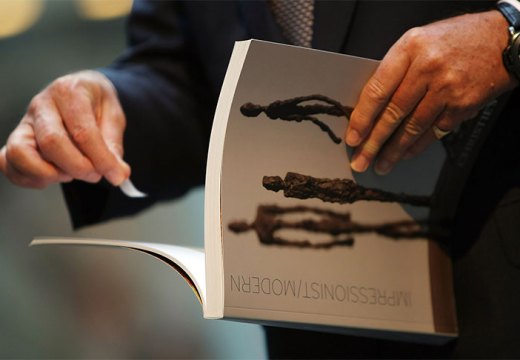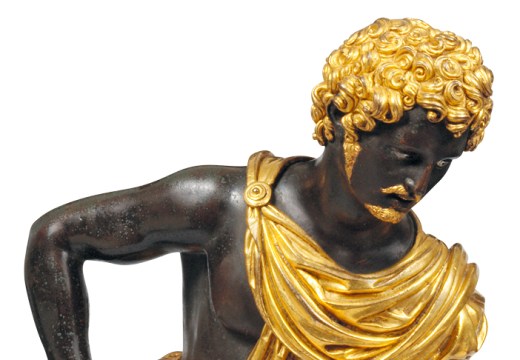The role of the art adviser – historically someone who acted solely on behalf of clients to buy works of art and build their collections – is undergoing radical revision. In April, the mega-dealer Larry Gagosian announced that he was launching a standalone advisory firm – the first dealer to do so, at least officially. The move has raised questions over conflicts of interest: can the two businesses really be kept separate, and just how far can one dealer’s monopoly stretch?
Crucially, although housed in the gallery’s New York headquarters, Gagosian Art Advisory will have its own office, database and staff – headed up by former Christie’s executive Laura Paulson. Meanwhile, Paulson’s husband, Andrew Fabricant, has been promoted to the new role of chief operating officer at the gallery (the couple have long worked side by side without swapping trade secrets). According to a statement, the advisory is an ‘independent group distinct and separate from Gagosian’, which ‘will provide a full range of collection management services […] including appraisals and conservation’. It will also ‘guide new collectors as they begin to navigate the complexities of the global art market’. Just how far clients will be guided to buy from other galleries remains to be seen. (A spokesman for Gagosian Art Advisory told Hyperallergic in April that the firm ‘will always act in the best interest of its clients’.)
The London-based adviser Nazy Vassegh notes how the same questions were raised when Sotheby’s acquired the boutique advisory group Art Agency, Partners (AAP) for $85m in 2016. ‘Galleries or auction houses can argue that they are bringing in talent and experience that will benefit their client outreach, helping to bring in new clients and deepen relationships with existing clients,’ she says. ‘The question is how to do this without conflict.’ AAP has since expanded into advisory services for living artists and estates, last year announcing a collaboration with Pace Gallery on the representation of the Vito Acconci estate. Whether the acquisition is paying off for Sotheby’s is up for debate: over the past three years, AAP has made just $18.5m, although that figure does not include client activity in private sales or auctions.
Another adviser breaking the mould is Lisa Schiff, who launched her first space in Tribeca, New York, on 29 May. The two-storey venue houses her advisory firm, an exhibition space and concept store, where she plans to sell limited-edition pieces and one-off commissions, although she will not represent artists. The main impetus to launch the space came from a need to sell secondary-market works acquired by her clients over the years. ‘We rarely work with people who just sell their walls; most of our clients’ [works] go into storage, so we have to be able to move things out. The whole hypocrisy about reselling is so ridiculous,’ says Schiff.
Sotheby’s Institute of Art notes on its website that the ‘code of ethics’ for art advisers maintains that, first and foremost, an adviser should serve only the needs of the client. ‘As such, art advisers are discouraged from holding inventory, acting as private dealers, or accepting additional compensation – from an artist, vendor, or a gallery – that could create a conflict of interest.’ With no formal regulatory body for advisers, however, such codes are merely guidelines. (The Association of Professional Art Advisors [APAA] has more than 170 members, who agree to adhere to its code of ethics when joining the organisation.)
Indeed, while dealers are naturally advisers, advisers are increasingly venturing into private dealing. Schiff says she is ‘quite adamant’ about demarcating the different ways in which she sells. ‘There’s reselling, there’s private dealing and then there’s dealer to dealer, which I also do,’ she explains. As for holding stock, Schiff says it’s often a matter of seizing an opportunity: ‘Sometimes it’s timing; pieces come up and there’s no one there to buy it and I can’t let it go.’
One of the biggest changes in recent years, Schiff observes, is how galleries’ focus has switched to their artists. ‘In the past, a gallerist would cater to both their artists and their clients, because you bought one thing a year and you went to your local gallery,’ she says. ‘But in a global art world, that’s no longer possible. The crux of every gallery is now the artist, that’s their client, which creates more room for advisers.’
Vassegh, who left her position as the chief executive of Masterpiece London in 2016, says she operates a similar model to Schiff, whereby she advises clients, but also sells some secondary-market art and design pieces. ‘As long as you buy works with integrity and authenticity and always put your client’s collection needs first, I see no issue with this,’ she says. And, as competition heats up between auction houses and high-end dealers, it is likely we will see more crossover. As Vassegh notes: ‘Everyone is looking to increase profitability, market share, new revenue streams, new clients and capabilities.’ With such high stakes, the art market’s players will only continue to adapt and survive, or – in some cases – thrive.
This is an updated version of an article from the June 2019 issue of Apollo. Preview the current issue and subscribe here.
Unlimited access from just $16 every 3 months
Subscribe to get unlimited and exclusive access to the top art stories, interviews and exhibition reviews.














![Masterpiece [Re]discovery 2022. Photo: Ben Fisher Photography, courtesy of Masterpiece London](http://www.apollo-magazine.com/wp-content/uploads/2022/07/MPL2022_4263.jpg)
Is the Stirling Prize suffering from a case of tunnel vision?